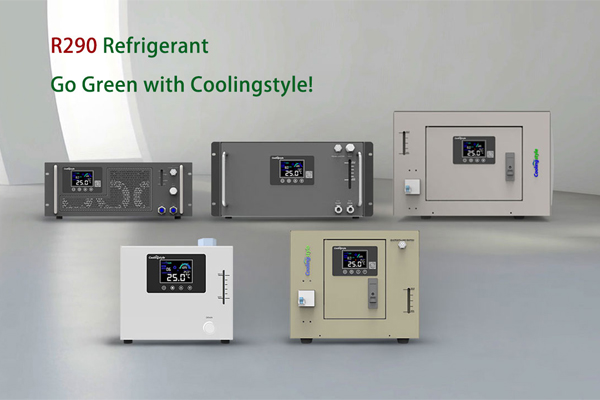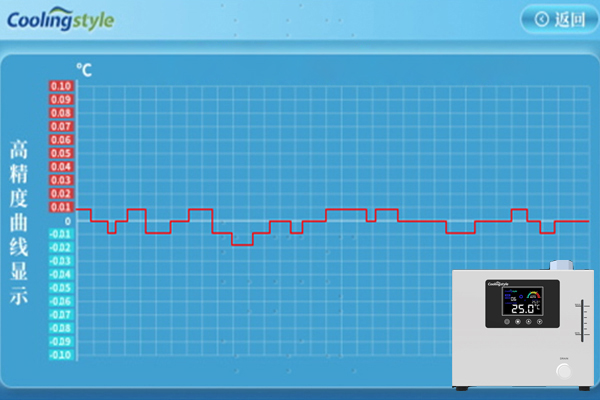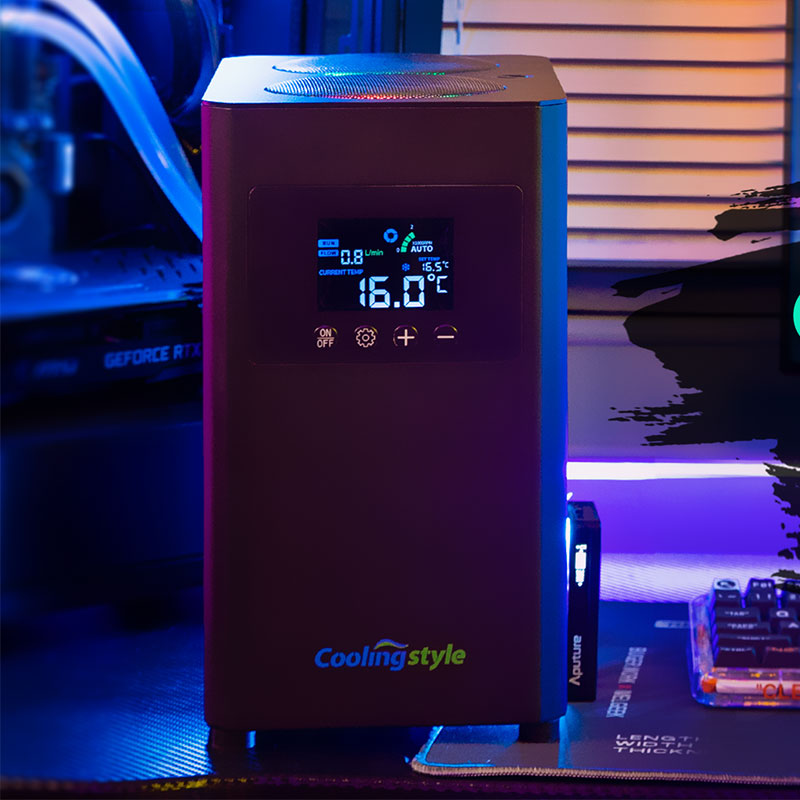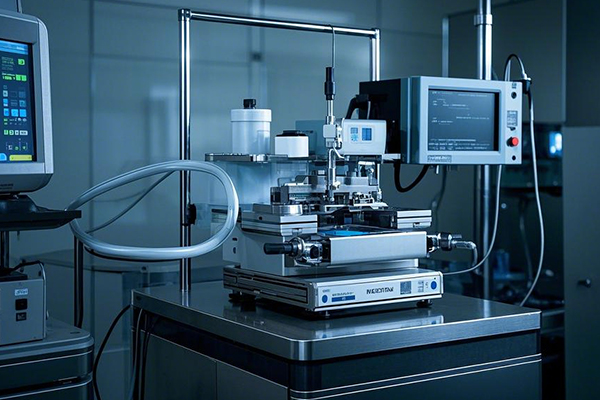レーザー, 1960年代に最初に発明されました, さまざまな業界で不可欠なツールになっています. しかし, すべての高エネルギーデバイスと同様に, 彼らが生成する熱を管理することは、彼らのパフォーマンスを確保するために重要です, 寿命, そして安全. レーザーとは何かを探りましょう, それらのアプリケーション, そして、熱ニーズを効果的に管理する方法.
レーザーとは何ですか?
レーザーは、光の増幅を通して光を放出するデバイスです, その名前が立っています 放射線の刺激放出による光増幅. レーザーはその精度で知られています, 力, そして多用途性.
レーザーのアプリケーション:
- 消費者産業:
- 以来 1974, レーザースキャナーは、小売設定でバーコードを読むために使用されています.
- 製造業:
- レーザーは彫刻に不可欠です, 切断, 掘削, さまざまな素材をマークします.
- 医療分野:
- 手術で使用, レーザーアイトリートメント, および化粧品の手順.

4. 軍隊:
- 無人航空機の破壊などのアプリケーションには、高エネルギーレーザーが採用されています.
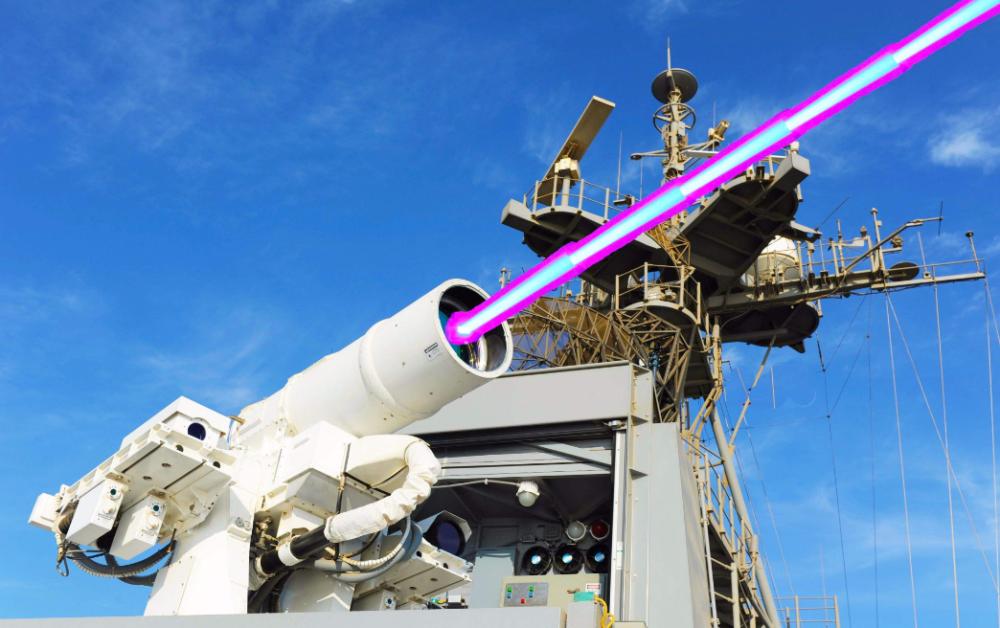
レーザーに熱管理が必要な理由?

動作中, レーザー内の電気エネルギーのほんの一部のみがレーザーエネルギーに変換されます. かなりの部分が熱として失われます. 適切な熱管理は不可欠です:
- 機能を維持します:
- 過熱を防ぎます, パフォーマンスを低下させたり、レーザーコンポーネントに損傷を与えたりできます.
- 寿命を強化します:
- 熱応力を緩和することにより、レーザーの寿命を延ばす.
- 精度を確保します:
- 温度の変動は、レーザー光の周波数を変える可能性があります, 出力品質の低下.
レーザーに適したチラーを選択します
適切なチラーを選択することは、効果的なレーザー冷却に不可欠です. これが重要な考慮事項です:
1. 冷却能力
- 熱負荷: これは、チラーがレーザーを冷却する必要がある最小容量です, 通常、ワットまたはBTU/HRで測定されます.
- 公称冷却能力: 通常、25のクーラント出力と周囲の気温で指定.
- ヒント: 熱負荷がわからない場合, 十分な冷却能力を持つチラーを選択するための参照として、レーザーの消費電力を使用してください.
2. クーラントの選択
- クーラントの種類:
- 蒸留または水道水: 一般的に藻類またはグリコール添加剤で処理されます.
- 脱イオン水: ウルトラピアクーラントを必要とするレーザー用, DI材料との互換性を確保します.
- 水グリコール混合物: 凍結を防ぐための低温環境に最適です.
3. ポンプ性能
- 流量と圧力:
- 安定した流量を提供するポンプを選択します.
- パイプの損傷や漏れを防ぐために、過度に高い圧力を避けてください, クーラント循環を妨げる可能性のある低圧.
4. 追加機能
- 通信インターフェース: RS-485などは、温度や流量などのチラーパラメーターのリモート監視と制御を可能にします.
- アラーム: 高/低温および低流量アラームは、レーザーとチラーを保護します.
- フィルター: クーラント内の粒子からレーザーとポンプを保護します.
産業チラーを使用することの利点
- パフォーマンスの向上: 一貫したレーザー出力のために安定した動作条件を維持します.
- 寿命の増加: レーザー成分を熱損傷から保護します.
- 多用途性: 幅広いレーザーと運用環境をサポートします.
- エネルギー効率: 最新のチラーは、最小限のエネルギー消費で最適化された冷却を提供します.
レーザーとその熱管理のニーズを理解する
レーザー, 1960年代に最初に発明されました, さまざまな業界で不可欠なツールになっています. しかし, すべての高エネルギーデバイスと同様に, 彼らが生成する熱を管理することは、彼らのパフォーマンスを確保するために重要です, 寿命, そして安全. レーザーとは何かを探りましょう, それらのアプリケーション, そして、熱ニーズを効果的に管理する方法.
レーザーとは何ですか?
レーザーは、光の増幅を通して光を放出するデバイスです, その名前が立っています 放射線の刺激放出による光増幅. レーザーはその精度で知られています, 力, そして多用途性.
レーザーのアプリケーション:
- 消費者産業:
- 以来 1974, レーザースキャナーは、小売設定でバーコードを読むために使用されています.
- 製造業:
- レーザーは彫刻に不可欠です, 切断, 掘削, さまざまな素材をマークします.
- 医療分野:
- 手術で使用, レーザーアイトリートメント, および化粧品の手順.
- 軍隊:
- 無人航空機の破壊などのアプリケーションには、高エネルギーレーザーが採用されています.
レーザーに熱管理が必要な理由?
動作中, レーザー内の電気エネルギーのほんの一部のみがレーザーエネルギーに変換されます. かなりの部分が熱として失われます. 適切な熱管理は不可欠です:
- 機能を維持します:
- 過熱を防ぎます, パフォーマンスを低下させたり、レーザーコンポーネントに損傷を与えたりできます.
- 寿命を強化します:
- 熱応力を緩和することにより、レーザーの寿命を延ばす.
- 精度を確保します:
- 温度の変動は、レーザー光の周波数を変える可能性があります, 出力品質の低下.
レーザー熱ニーズを管理する方法?
レーザー, 特にCo₂のような高エネルギータイプ, ディスク, ダイオード, およびファイバーレーザー, 堅牢な冷却システムが必要です. 産業用チラーは、レーザー冷却のために最も一般的に使用されるソリューションです.
産業用チラー:
チラーは、レーザーの共振器を介して冷却剤を循環させることにより、安定した温度を提供します, 光学, そして頭, 負荷の変動の下でも. 温度制御の高精度は、レーザー性能を向上させます.
レーザーに適したチラーを選択します
適切なチラーを選択することは、効果的なレーザー冷却に不可欠です. これが重要な考慮事項です:
1. 冷却能力
- 熱負荷: これは、チラーがレーザーを冷却する必要がある最小容量です, 通常、ワットまたはBTU/HRで測定されます.
- 公称冷却能力: 通常、25のクーラント出力と周囲の気温で指定.
- ヒント: 熱負荷がわからない場合, 十分な冷却能力を持つチラーを選択するための参照として、レーザーの消費電力を使用してください.
2. クーラントの選択
- クーラントの種類:
- 蒸留または水道水: 一般的に藻類またはグリコール添加剤で処理されます.
- 脱イオン水: ウルトラピアクーラントを必要とするレーザー用, DI材料との互換性を確保します.
- 水グリコール混合物: 凍結を防ぐための低温環境に最適です.
3. ポンプ性能
- 流量と圧力:
- 安定した流量を提供するポンプを選択します.
- パイプの損傷や漏れを防ぐために、過度に高い圧力を避けてください, クーラント循環を妨げる可能性のある低圧.
4. 追加機能
- 通信インターフェース: RS-485などは、温度や流量などのチラーパラメーターのリモート監視と制御を可能にします.
- アラーム: 高/低温および低流量アラームは、レーザーとチラーを保護します.
- フィルター: クーラント内の粒子からレーザーとポンプを保護します.
産業チラーを使用することの利点
- パフォーマンスの向上: 一貫したレーザー出力のために安定した動作条件を維持します.
- 寿命の増加: レーザー成分を熱損傷から保護します.
- 多用途性: 幅広いレーザーと運用環境をサポートします.
- エネルギー効率: 最新のチラーは、最小限のエネルギー消費で最適化された冷却を提供します.
ミニチュアロータリー冷凍コンプレッサーの世界的パイオニア
あらゆるレーザーシステムには、効率的な熱管理が不可欠です, その機能と耐久性の両方を確保します. 適切な冷却能力を備えたチラーを慎重に選択することにより, 信頼できるクーラント, および高度な機能, ピーク性能でレーザーを維持できます. 適切なソリューションで, レーザーは、業界全体の多様なアプリケーションで引き続き優れています.

